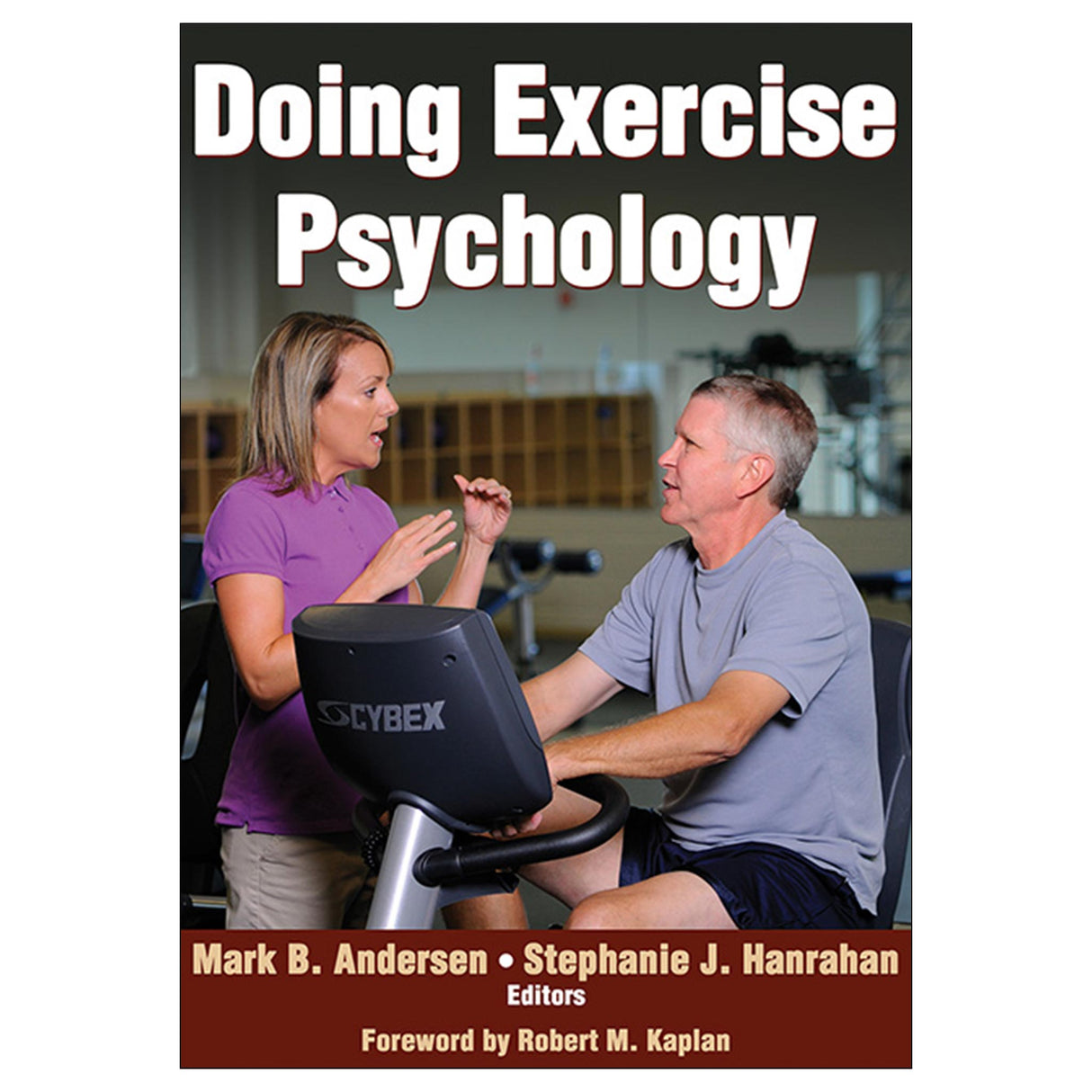Doing Exercise Psychology PDF
$60.00 USD
Access Duration: 10 Years
According to the President’s Council on Fitness, Sports & Nutrition, “If exercise could be packaged into a pill, it would be the single most widely prescribed and beneficial medicine in the nation.” Yet the incorporation of physical activity into a regular routine proves difficult for many. Bringing together a field of experts, Doing Exercise Psychology uses applied theories alongside authentic client interactions to address the challenging psychological components of physical activity.
Doing Exercise Psychology helps students understand how to build connections with individual clients, strengthen the professional relationship through listening, and understand clients’ needs. The text features diverse topics, bridging health psychology and exercise psychology and demonstrating the increasingly important role of physical activity in overall wellness and health.
The first chapter is devoted to the development of mindfulness as a practitioner, while another addresses the difficulties professionals encounter with their own inactivity, encouraging self-reflection in order to be more helpful and open with clients. A key feature of many chapters in Doing Exercise Psychology is the in-the-trenches dialogue between practitioner and client, accompanied by follow-up commentary on what went right and what went wrong in particular sessions. Through these real-world scenarios, students will witness firsthand the methods that are most effective in communicating with clients. The text also explores complex questions such as these:
• What are the implications and consequences of using exercise as a component of psychological therapies?
• How can practitioners help clients with impaired movement abilities as a result of chronic conditions or illness embrace physical activity as part of their therapy or their lives?
• How can exercise be incorporated in therapies to change nutrition, smoking, and alcohol habits?
• Why are some exercise protocols that are extremely effective for some but not for others?
• How can relationships, interrelatedness, and attunement to others be vehicles for healthy change in whatever kind of therapy is being done?
The book is arranged so that information flows progressively, covering major themes early and then applying them to the field. Part I introduces the relationship-building motif by covering the variety of relationships that one might find in exercise and physical activity settings. Part II addresses specific conditions and behavior change, with suggestions for encouraging activity in those who are also working to quit smoking, reduce alcohol consumption, or modify their nutrition habits. Part III deals directly with chronic and major medical conditions that professionals will contend with on a regular basis, including cancer, heart disease, and multiple sclerosis. Part IV delves into the dark side of exercise, such as overtraining, exercise dependence, and eating disorders.
A growing and exciting area of study, exercise psychology covers all the psychosocial, intra- and interpersonal, and cultural variables that come into play when people get together and exercise. Students and practitioners who work with individuals in exercise settings will find Doing Exercise Psychology a vital resource to refer to repeatedly in their practice.
Part I. Beginnings and Basics in Exercise (and Sport) Psychology
Chapter 1. Mindfulness, Therapeutic Relationships, and Neuroscience in Applied Exercise Psychology
Joe Mannion and Mark B. Andersen
Chapter 2. Relationships Between Coaches, Athletes, and Sport and Exercise Scientists
David T. Martin and Kirsten Peterson
Chapter 3. Running Across Borders: Cross-Cultural Exercise Psychology
Stephanie J. Hanrahan
Chapter 4. Should I Consult a Psychologist? An Autobiographical Account of Physical Inactivity in an Exercise and Sport Psychologist
Tony Morris
Chapter 5. Dancing for Your Life: Movement, Health, and Well-being
Stephanie J. Hanrahan
Part II. Changing Habits
Chapter 6. Motivational Interviewing, Exercise, and Nutrition Counseling
Jeff Breckon
Chapter 7. Exercise and Smoking Cessation: Tackling Multiple Health Behavior Changes
Adrian H. Taylor and Tom P. Thompson
Chapter 8. Adjunct Exercise Therapy for Alcohol Use Disorders
Matthew P. Martens and Ashley E. Smith
Part III. Exercise and People With Chronic Conditions
Chapter 9. Using the Exercise Arrow to Hit the Target of Multiple Sclerosis
Robert W. Motl, Yvonne C. Learmonth, and Rachel E. Klaren
Chapter 10. Moving for Your Heart’s Sake: Physical Activity and Exercise for People With Cardiac Disease
Michelle Rogerson and Mark B. Andersen
Chapter 11. Exercise for Cancer Patients and Survivors: Challenges, Benefits, Barriers, and Determinants
Karen M. Mustian, Lisa K. Sprod, Lara A. Treviño, and Charles Kamen
Chapter 12. It Hurts to Move: The Catch-22 of Physical Activity for People With Chronic Pain
Melainie Cameron and Janelle White
Chapter 13. It’s About Moving: Enabling Activity and Conquering Prejudices When Working With Disabled People
Cadeyrn J. Gaskin and Stephanie J. Hanrahan
Chapter 14. Let’s Run With That: Exercise, Depression, and Anxiety
Kate F. Hays
Part IV. The Dark Side of Exercise
Chapter 15. Overtraining in Professional Sport: Exceeding the Limits in a Culture of Physical and Mental Toughness
Stephanie J. Tibbert and Mark B. Andersen
Chapter 16. The Relationship Between Exercise and Eating Disorders:
A Double-Edged Sword
Justine J. Reel
Chapter 17. Exercise Dependence: Too Much of a Good Thing
Albert J. Petitpas, Britton W. Brewer, and Judy L. Van Raalte
“An invaluable resource for psychologists and fitness professionals alike, Doing Exercise Psychology is especially recommended for college library collections.”
-- Midwest Book Review
“This unique book integrates many of the traditional practices and theories of health psychology with issues typical of the sports setting. The content is well supported by current peer-reviewed literature and case study examples.”
-- Doody’s Book Review (5 Star Review)





